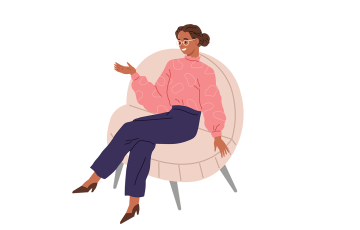Help for first-time home buyers

Do you earn too little to qualify for a home loan, but too much to access a free basic government house? The Finance Linked Individual Subsidy Programme could be just what you need.
If you’re looking to buy your first home, but earn between 3,501,00 and 22,000,00 a month, you fall into the awkward ‘gap’ market – earning too little to qualify comfortably for a home loan from a financial institution (though they may grant them), and too much to qualify for the government’s ‘free house’ subsidy scheme.
But help could be at hand. The government’s Finance Linked Individual Subsidy Programme (FLISP), one of the National Housing Subsidy Programmes set up under the Housing Act of 1997, is aimed at ensuring that those in low- to middle-income households have access to the ‘adequate housing’ to which all South Africans have a right in terms of Section 26 of the Constitution. FLISP is run by the National Housing Finance Corporation (NHFC), and depending on your gross monthly income, the once-off subsidy can vary from 27,960,00 to 121,626,00. The way it works is that it either reduces your initial home loan amount by providing a deposit, which reduces your monthly repayment instalments; or it helps make up the shortfall between the qualifying loan amount and the total property price.
WHO QUALIFIES?
As laid out by the NHFC, to apply for FLISP you need to:
- Earn between 3,501,00 and 22,000,00 a month
- Be a first-time home buyer
- Be a South African citizen or permanent resident
- Be over the age of 18
- Have financial dependents
- Have never benefited from any government housing subsidy scheme before
- Have an ‘approval in principle’ of a home loan from an accredited financial institution.

WHAT YOU NEED
- Among the supporting documents you’ll need to provide are:
- Your bar-coded South African ID or permanent resident permit
- The birth certificates (or South African IDs) of your financial dependents
- Your marriage certificate (or cohabiting affidavit proof of partnership)
- Proof of your monthly income
- Proof of home loan approval in principle from an accredited bank/lender
- The buyer/seller agreement of sale.
Related article: Do you know your financial status?
IT HELPS TO DO YOUR HOMEWORK
You can find out the amount of the FLISP subsidy you qualify for before you apply for a home loan, which might help your loan negotiation with the bank or lender.
The NHFC estimates that it takes about seven days to process an application from the time your completed form, with attachments of all the required supporting documents, is received, but you can expect delays linked to the Covid-19 pandemic.
Related article: How to get your home loan approved
WHAT YOU CAN USE FLISP FOR
You can use the FLISP subsidy to buy an existing, new or old residential property; to buy a vacant serviced residential stand linked to a National Home Builders Registration Council (NHBRC) registered homebuilder contract; to build on a residential stand you own (using an NHBRC registered homebuilder); or to build on a tribal stand available through ‘permission to occupy’.
USEFUL CONTACT:
For more details about FLISP, and the application process flow, visit nhfc.co.za and click FLISP under the Products and Services dropdown.
Email info@nhfc.co.za or call +2711 644 9800.
Related article: What is good debt?
![]() JET CLUB HELPLINES
JET CLUB HELPLINES
LEGAL ADVICE
For free advice on any legal aspect of buying a home, Jet Club members can call our helpline.
SA & Namibia
0800 00 45 45
Botswana, Lesotho & Swaziland
+2711 991 8258
Related articles

Latest Jet club magazine
We’ve got the latest trends, exciting prizes and exclusive savings just for you!
Jet Club will not pass your details to anyone else. By clicking the subscribe button you confirm you have read and agree to the Jet Club Terms and conditions and Jet Club Privacy Statement.
Subscribe

